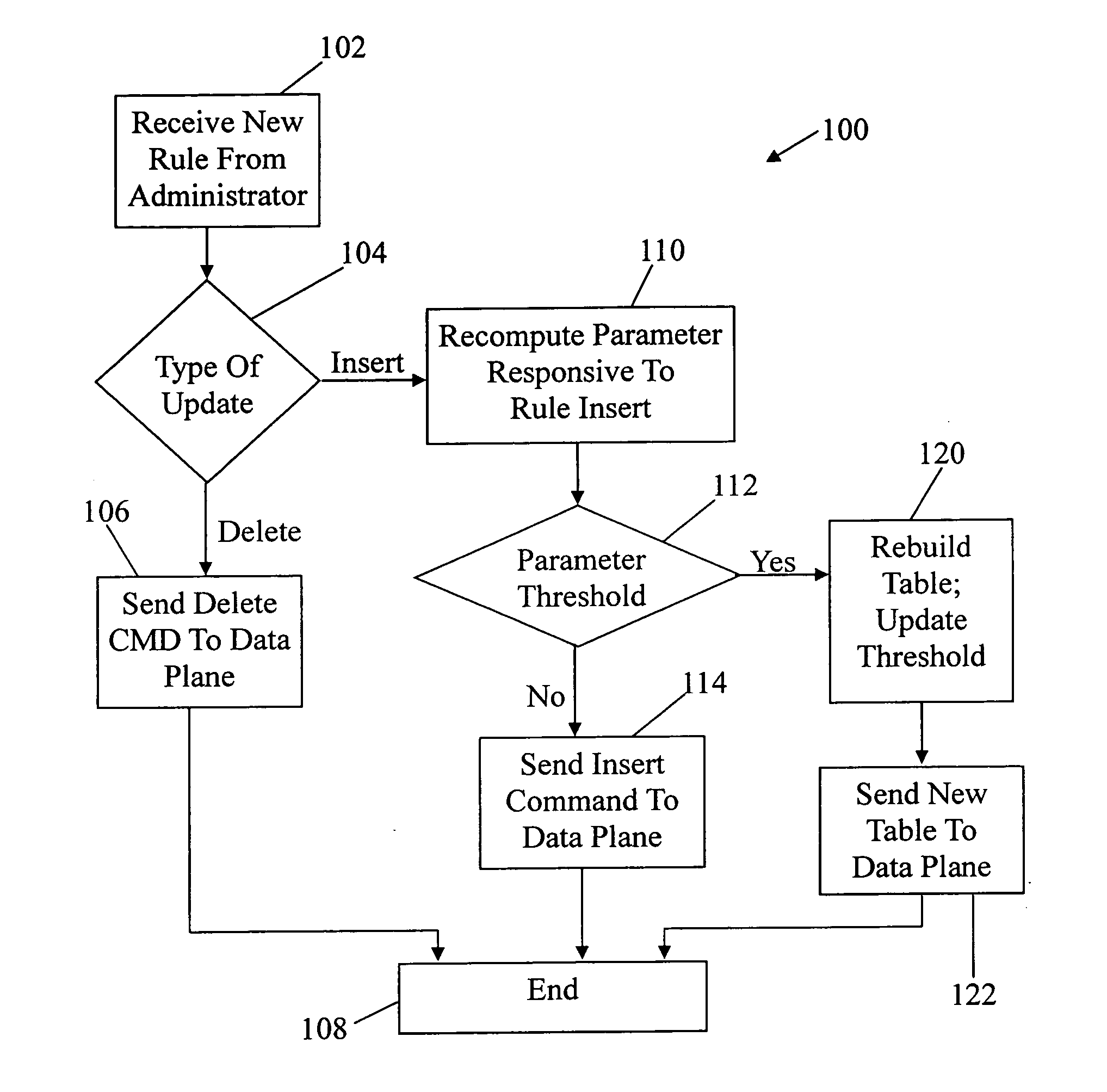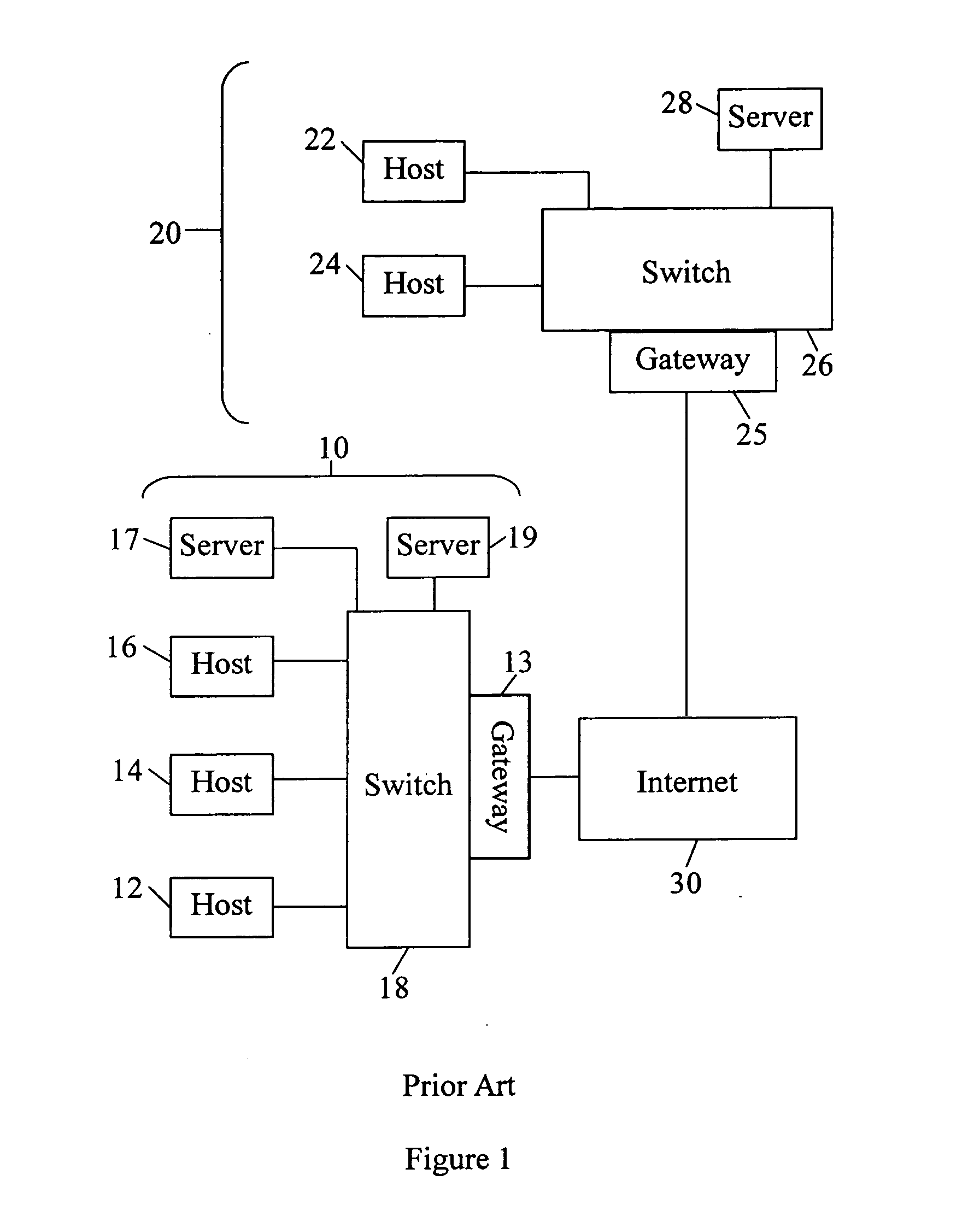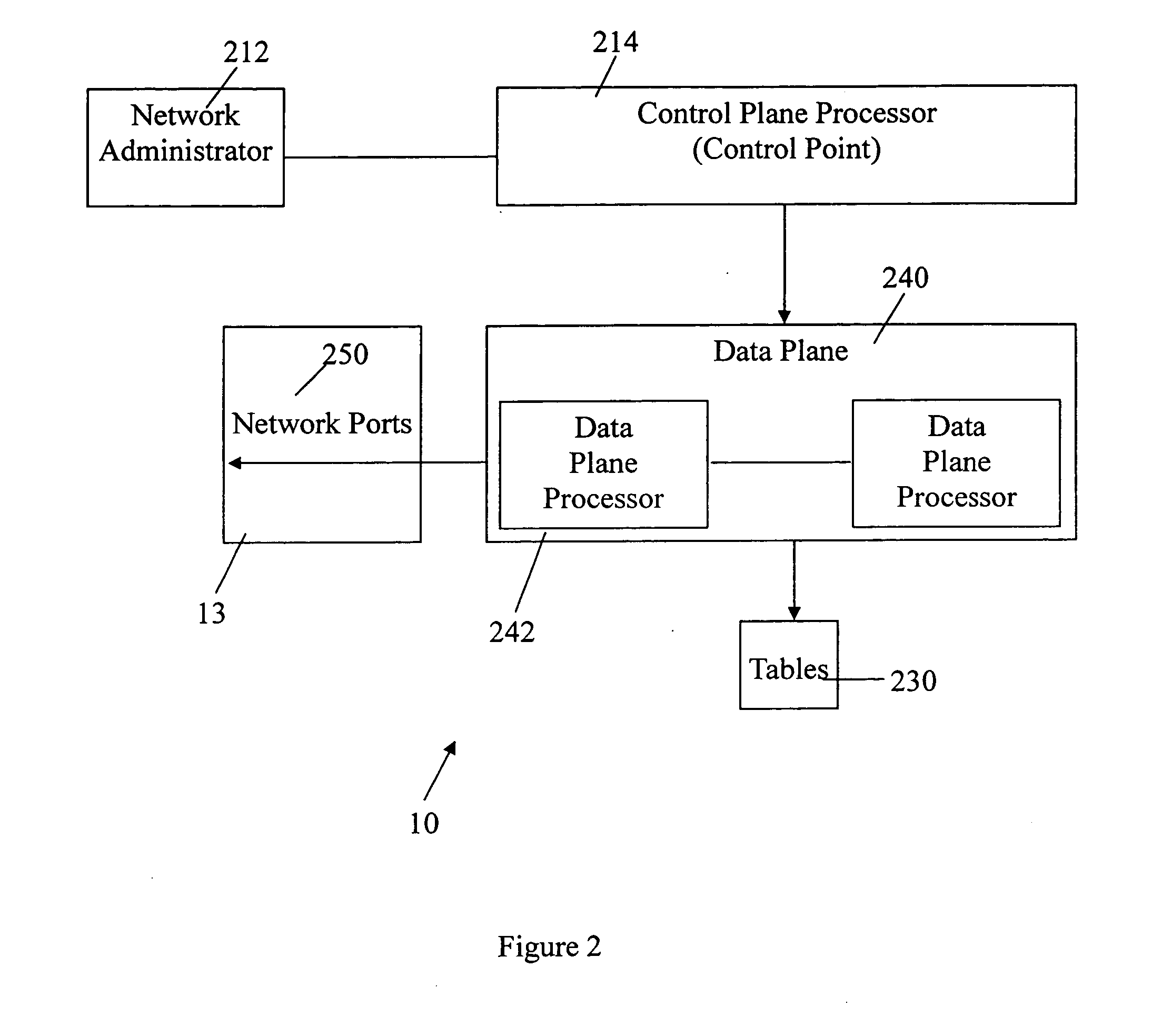Multi-field classification dynamic rule updates
a dynamic rule and multi-field technology, applied in the field of multi-field classification dynamic rule updates, can solve problems such as limiting the usefulness of this method
- Summary
- Abstract
- Description
- Claims
- Application Information
AI Technical Summary
Benefits of technology
Problems solved by technology
Method used
Image
Examples
Embodiment Construction
[0016] The present invention provides an improved method and system for handling rule changes that efficiently supports frequent incremental updates. The method and system are based on the fact that a slightly sub-optimal tree structure can be tolerated with very little impact to search latency. The present invention thus responds to each individual rule insertion or deletion according to the same procedures used in a Fixed Match (FM) Tree. FM trees are more fully described in commonly-assigned U.S. Pat. No. 6,675,163, issued Jan. 6, 2004 to Bass et al. for “Full match (FM) search algorithm implementation for a network processor”, which is hereby incorporated by reference into this description as fully as if here represented in full. What is new in the present invention is a system and method for supplementing prior art procedures to determine whether or not the insertion of a new rule can be made without rebuilding the table.
[0017] In a preferred implementation, the deletion of a ...
PUM
 Login to View More
Login to View More Abstract
Description
Claims
Application Information
 Login to View More
Login to View More - R&D
- Intellectual Property
- Life Sciences
- Materials
- Tech Scout
- Unparalleled Data Quality
- Higher Quality Content
- 60% Fewer Hallucinations
Browse by: Latest US Patents, China's latest patents, Technical Efficacy Thesaurus, Application Domain, Technology Topic, Popular Technical Reports.
© 2025 PatSnap. All rights reserved.Legal|Privacy policy|Modern Slavery Act Transparency Statement|Sitemap|About US| Contact US: help@patsnap.com



